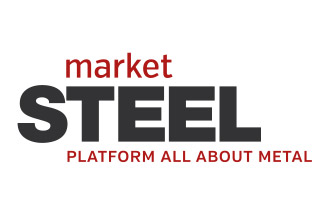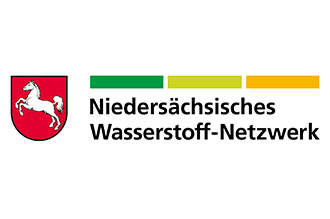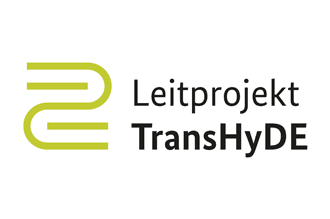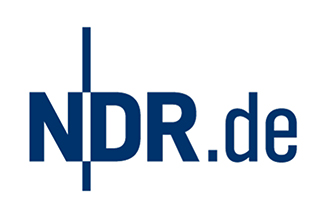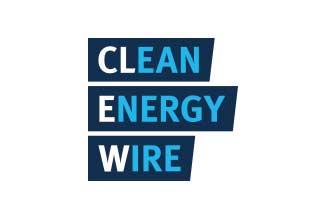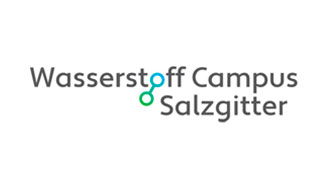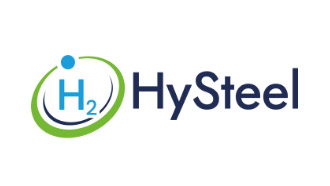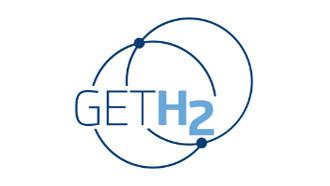With SALCOS® (Salzgitter Low CO2 Steelmaking), we have laid the foundations for virtually climate-neutral steel production together with partners from industry and research. Central elements of the program are electricity from renewable sources and its use in the production of hydrogen by means of electrolysis. This green hydrogen will replace the coal that we currently use in the conventional blast furnace process. This will be possible with the help of so-called direct reduction plants, in which iron ore is reduced to iron directly in its solid-state using hydrogen. With this technology, water vapor is emitted instead of CO2.
To produce green steel, our SALCOS® program pursues the Carbon Direct Avoidance Strategy, which stands for avoiding the generation of CO2 in steel production from the outset. Overall, this will enable us to reduce our CO2 emissions by over 95 %.
How can hydrogen contribute to the production of green steel?
SALCOS® plans to use hydrogen for climate-neutral steel production. The process behind this can be explained as follows: We currently produce pig iron by using coal in our blast furnaces. This process releases CO2. With direct reduction, however, iron ore is reduced using hydrogen. The hydrogen reacts with the oxygen in the iron ore (iron oxide) directly in the solid state and converts it into sponge iron (almost pure iron). Instead of CO2, this technology produces water (H2O), which in turn is used in the integrated process. In order to be able to process sponge iron further, the porous material is finally melted down together with steel scrap in an electric arc furnace.
Our SALCOS® program envisages gradually replacing our blast furnaces with direct reduction plants. The first of these plants could go into operation in 2026.
How do we produce green hydrogen?
Hydrogen production at Salzgitter Flachstahl
Hydrogen can be produced by means of electrolysis. In this chemical reaction, water is split into its components hydrogen and oxygen by means of electricity. It is beyond doubt for us that the electricity required for this must come from renewable energies such as wind power. For the production of green hydrogen, we erected seven wind turbines on our Group premises in Salzgitter under the project name "WindH2 - Wind Hydrogen Salzgitter", together with Avacon Natur GmbH. The green electricity generated by these plants is used to produce green hydrogen by means of PEM electrolysis.
Another electrolysis is being operated as part of the GrInHy2.0 project. The high-temperature electrolyzer is the largest of its kind in the world and operates highly efficiently. Unlike PEM electrolysis, the GrInHy2.0 electrolyzer uses steam from industrial waste heat from steel production. Both plants can cover today's hydrogen demand for annealing processes and for steel refining, thus displacing gray hydrogen generated from natural gas from our production. However, the quantity required for this is only a fraction of the hydrogen needed for SALCOS® implementation.
Focusing on the future - Our successes
SALCOS® is our comprehensive program on the way to climate-neutral steel production. During our transformation process, we are celebrating many smaller and larger successes. In the Salzgitter Holding press releases, we keep you up to date on all developments relating to SALCOS® and green steel.
End of 2033
Full SALCOS® conversion: CO2 reduction up to 95%
End of 2030
Second SALCOS® expansion stage: 50% reduction in CO2 emissions
2026
First SALCOS® expansion stage: CO2 reduction of 30%
2023
BeWiser Continuation of the accompanying research
2022
μDRAL –
Mikro-Direkt-ReduktionsAnLage
Construction of a demonstration plant for direct reduction in Salzgitter
2021
Commissioning WindH2 electrolysis
2020
Commissioning of world's largest high-temperature electrolysis (GrInHy2.0)
2020
Commissioning "Windpark Salzgitter" (30 MW)
2020
Start of SALCOS® accompanying research (BeWiSe, MACOR follow-up project)
2019
Start GrInHy2.0
2017
Start SALCOS® Feasibility Study (MACOR)
2016
Start of research project GrInHy
2015
Project start SALCOS®
Step by step to climate-neutral steel
Our climate-neutral steel production will take place in three expansion stages over the long term. These contain clearly defined targets for the coming years. By gradually replacing the blast furnaces currently in use with direct reduction plants and electric arc furnaces, we will already be in a technical position to cut emissions by around 95 % by the end of 2033.
This is a strong project that will enable us to achieve the key figures we have set ourselves and live up to our responsibility to this and future generations.
Our climate-neutral steel production comprises three central building blocks and is supported by various research projects. From hydrogen production and sector coupling to direct iron ore reduction, we are working together with various specialists.
The program is supported by extensive studies on technical and economic feasibility, which are used to define the necessary framework conditions for the production of green steel and to schedule the next steps.
Press commentary on SALCOS®
With the launch of the SALCOS® program and the associated pioneering position in the industry, we are also attracting a great deal of public attention. We are pleased about the growing interest in the topic of "green steel" through Carbon Direct Avoidance and about the fact that other steel manufacturers are also increasingly considering the path of climate-neutral steel production.
We make the difference -
for the environment
Our commitment to people, the environment and society
You can't see the difference, but it will be significant for our environment. While our products will remain of the usual highest quality, with the switch to low CO2 production our emissions will be significantly reduced. We have a clear target in at least 95% less CO2 emissions in steel production.
With SALCOS®, we have deliberately opted for a so-called "Carbon Direct Avoidance (CDA)" strategy, which avoids the generation of CO2. This project puts us in a pioneering position in the industry. The challenges that arise in the production of climate-neutral steel are extensive and the hurdles are primarily of an economic nature. The costs of natural gas, hydrogen and renewable energy are significantly higher than those of the coal used today, so we are reliant on an appropriate political framework in order to ensure the production of green steel and remain competitive.
International
competition
In order to finance the technologies required for SALCOS® and to compensate for the higher operating costs associated with climate-neutral steel production, a suitable regulatory framework would have to be created. As an international company operating on the global market, it is not possible to pass on the increased costs to green steel as a product. However, this is not possible because the price pressure is immense. In other countries, steel is produced more cheaply, but with higher emissions and in compliance with lower standards.
Integration into
the steel mill
One of the biggest technical challenges in the production of green steel is the integration of the new systems into the existing steelworks. This project has not yet been implemented anywhere in the world. Salzgitter could therefore be the first steel company to successively incorporate a direct reduction plant into an integrated steel mill for the production of climate-neutral steel.
Economic
criteria
A number of precautions are required to obtain green steel. With the MACOR feasibility study, our team from Salzgitter Flachstahl and Salzgitter Mannesmann Forschung, together with Fraunhofer Institutes, has examined whether the plans for climate-neutral steel production in our steelworks meet economic requirements as well as technical and ecological ones. The feasibility of SALCOS® depends, among other things, on how the EEG levy, for example, will develop. In addition, extensive calculations have already been carried out regarding the production of green steel.
Responsibility for
the region and employees
With SALCOS®, we made a conscious decision to design the scenario in such a way that the equipment for the production of green steel could be used in our integrated steelworks at the Salzgitter site. Relocating production to non-European countries in order to reduce the need for CO2 certificates, known as carbon leakage, contradicts our idea of regional and global responsibility.
EU emissions
trading
Companies within the European Union must buy certificates for CO2 emissions that allow them to emit a certain amount of carbon dioxide. These certificates are traded in Europe. In order to reduce emissions in the future and promote climate-neutral steel, the availability of certificates is to be drastically reduced in the 4th trading period from 2021. This is intended to increase the price of certificates (European Union Allowance (EUA)). These enormous additional costs will only affect European companies, which will jeopardize or even lose their international competitiveness as a result.
Responsibility for
our environment
We understand sustainability as a concept of holistic responsibility. For the production of green steel, we have therefore opted for the so-called "Carbon Direct Avoidance (CDA)" strategy, which directly avoids the CO2 that was previously produced during the process of reducing iron oxide in the blast furnace. With SALCOS®, we have already developed a program for this project and thus paved the way for climate-neutral steel production.
Technical
feasibility
Our plan to produce climate-neutral steel is technically very mature and can be implemented in the near future. The SALCOS® team and various external experts are continuing to work on optimizing the SALCOS® program. The SALCOS® implementation envisages a transformation process lasting several years. In order to ensure the production of green steel, blast furnaces and converters are to be gradually replaced by direct reduction plants and electric arc furnaces.
EU
climate targets
The European Union plays a key role in global climate protection. In the past, it has already formulated numerous programs and regulations aimed at reducing CO2 emissions, particularly in the industrial sector. Emissions trading is an important instrument for this goal. Compared to 1990 levels, CO2 emissions in the EU are to be reduced by 55 % by 2030 in order to achieve climate neutrality by 2050. Our SALCOS® program makes a contribution by aiming to use hydrogen to produce climate-neutral steel and significantly reduce our emissions.























